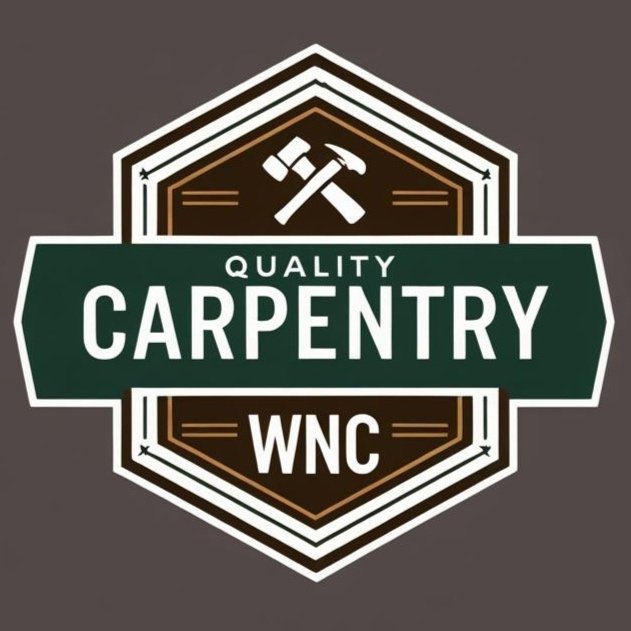Don't Let Rot Win: A Pro's Guide to Repairing Your Door Frame Bottom
Is the bottom of your exterior door frame looking a little... soggy? You're not alone. Rotted door frame bottoms are a common problem for homeowners in Waynesville, Asheville, and Hendersonville, NC, especially here in Western North Carolina where we see a good mix of rain and humidity. But before you panic and think "full door replacement," know that often, a professional repair can save your frame, and your wallet!
At Quality Carpentry WNC, we see this issue all the time in homes across Waynesville, Asheville, and Hendersonville. It's usually caused by consistent moisture exposure – think rain splashing up, a poorly sloped sill, or even just paint that's worn thin over time. The good news? We can fix it right, ensuring it lasts for years to come.
Want to understand what goes into a durable repair? Let's walk through the steps a pro takes to tackle a rotted door frame bottom.
Step 1: The Deep Dive – Assessing the Damage & Getting Ready 🕵️♂️
Before any cutting begins, a true professional does their homework.
Find the Root Cause: We don't just fix the rot; we figure out why it happened. Is your door sill sending water back towards the house? Is the caulk failing? Understanding the culprit helps us prevent the problem from coming back.
Probe for the Truth: Rot can be sneaky and spread beyond what's visible. We'll gently probe the wood with an awl to find every soft spot, ensuring we cut into only solid, healthy wood. You might be surprised how far it extends!
Clear the Area: Any nearby trim like quarter round or baseboards needs to be carefully removed. We'll also protect your floors and walls, making sure your home stays clean.
Door Protection: If we're not removing the door itself, we'll tape it off securely to keep it pristine during the repair.
Step 2: Precision Cuts – Saying Goodbye to the Rotten Bits ✂️
This is where precise carpentry comes into play. We need to make clean, straight cuts to ensure a perfect fit for the new wood.
The Right Tools: We'll use specialized tools like an oscillating multi-tool for tight spots or a Japanese pull saw for incredibly clean, accurate cuts. A sharp chisel helps clean up those corners.
Making the Cut: The goal is a perfectly straight, level cut across the entire width of the door jamb, extending a few inches above the highest point of the rot into healthy wood. For the exterior casing (the trim around the door), we'll make a matching cut.
Removing the Old: Once cut, the rotten section is carefully pried out, and any remaining debris is thoroughly cleaned away.
Step 3: Crafting the New – A Stronger Splice for Lasting Results 💪
This is the heart of a professional repair, ensuring the new wood isn't just tacked on, but truly integrated for strength and weather resistance. We go beyond simple "butt joints" that can easily fail.
The Scarf Joint Advantage: For jambs and casing, we often use a scarf joint. This involves cutting a long, angled bevel on both the existing frame and the new piece. Why? It creates a much larger surface area for the adhesive and fasteners, making the splice incredibly strong and more resistant to moisture. Think of it like a long handshake between two pieces of wood.
Material Matters: We choose exterior-grade, decay-resistant wood for the new section. Often, pressure-treated lumber is a good choice, but we ensure it's dry enough for proper finishing. For ultimate rot proofing, especially in highly exposed areas, we might opt for cellular PVC trim boards. They’re impervious to water and hold paint beautifully!
Step 4: Installation & Sealing – The Professional Finish ✨
Now it's time to bring it all together, focusing on a seamless, weather-tight finish.
Pre-Paint Protection: If using wood, we’ll prime and paint all sides of the new piece before installation. This creates a protective envelope, especially on the unseen bottom and back, maximizing its lifespan.
Adhesive Power: A generous amount of exterior-grade construction adhesive is applied to the joint surfaces, ensuring a powerful, permanent bond.
Securely Fastened: We precisely position the new piece, securing it with exterior-grade trim screws or stainless steel finish nails. We make sure they're countersunk for a smooth surface. If we're using PVC, special PVC cement and specific screws are used.
Flawless Finish: Any screw holes or minor imperfections are meticulously filled with exterior-grade wood filler or a 2-part epoxy filler. Once dry, everything is sanded perfectly smooth.
The Final Seal: We apply a high-quality exterior-grade elastomeric caulk along all seams – where the new wood meets the old, and where the frame meets the siding or threshold. This is critical for keeping moisture out. Finally, the repaired area is painted to match, ensuring excellent coverage.
Step 5: Prevention is Key – Our Advice for Long-Term Protection 🌱
Our job isn't just about fixing; it's about preventing future problems.
Sill Check: We'll inspect your door sill to make sure it slopes away from the house, shedding water properly.
Drainage Matters: We'll advise on ensuring good drainage around your door – keeping mulch or soil piled against the frame is a no-no!
Maintenance Tips: We'll share simple tips for ongoing maintenance, like regularly checking caulk lines and touching up paint every few years.
Don't let a small area of rot compromise your home's integrity or curb appeal. If you've got a rotted door frame bottom in your Waynesville, Asheville, or Hendersonville, NC home, trust the experienced pros at Quality Carpentry WNC to provide a durable, professional repair that stands the test of time.
Ready to get that door frame looking great and protected again?
Contact Quality Carpentry WNC Today for a Free Estimate!
